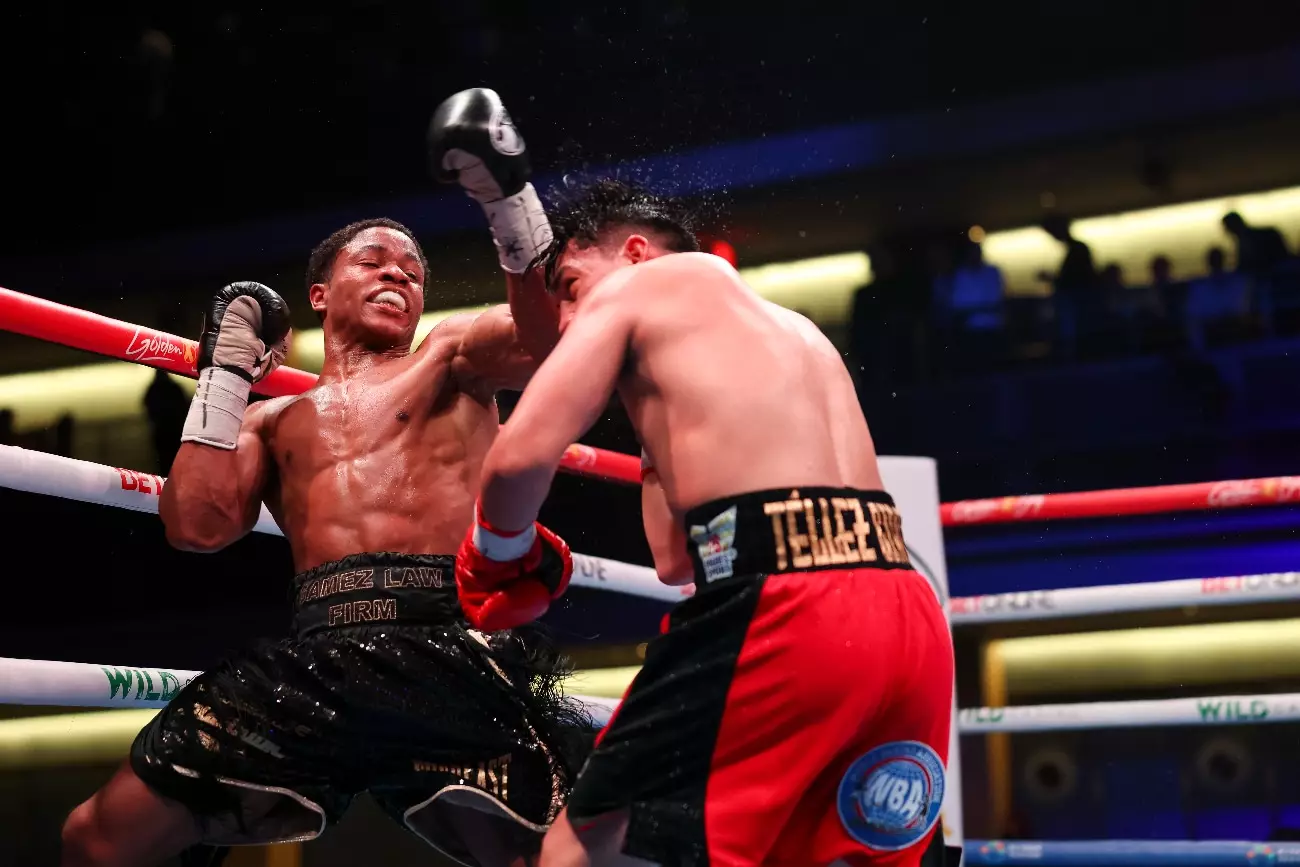In the high-stakes game of boxing, the path to championships is often paved with strategic decisions, risk assessment, and calculated timing. Oscar De La Hoya, a veteran in the sport and an advocate for emerging talent, recently expressed his thoughts regarding Floyd “Kid Austin” Schofield Jr.’s decision to challenge Shakur Stevenson for the WBC lightweight title at such an early stage in his career. De La Hoya, while recognizing the potential of the young boxer, urged caution and emphasized the value of experience in elite competition.
Schofield, currently boasting an impressive record of 18 wins with 12 knockouts, is set to face Stevenson—who remains undefeated with 22 wins—on February 22nd in Riyadh, Saudi Arabia. This opportunity, nestled within the highly anticipated undercard for the rematch between Artur Beterbiev and Dmitry Bivol, suggests a significant milestone for Schofield. However, De La Hoya’s insights spotlight a crucial question: Are young fighters ready to take on elite opponents, or should they be more focused on building their skills before stepping into the ring with champions?
De La Hoya’s perspective stems from a blend of experience and insight into the boxing landscape. He was initially convinced that Schofield should take a more gradual approach to his career, a sentiment that contrasts sharply with Floyd Sr.’s eagerness to seize the opportunity against Stevenson. In boxing, experience can often make the difference between victory and defeat; its absence can result in unpreparedness when facing a seasoned champion. Despite his concerns, De La Hoya acknowledges Schofield’s attributes as a formidable contender, describing him as a “throwback fighter” with the mentality to fight anyone and build a legacy. This dichotomy raises a poignant discussion about balancing ambition with prudent career planning.
One underlying factor for the Schofield family’s insistence on this fight could be the potential financial reward associated with challenging such a high-profile opponent. Boxing is not merely a sport—it is also a business. With that, Schofield and his camp might view this as not only a significant career opportunity but also a chance at a lucrative payday.
Game Plan: Keys to Success
Despite the risks involved, De La Hoya remains optimistic about Schofield’s chances against Stevenson. He outlines a clear strategic framework that Schofield should employ during the match, emphasizing the importance of maintaining pressure, utilizing his jab, and fighting tall. These tactics are crucial for disrupting Stevenson’s renowned defensive style, often referred to as the “Philly shell.” By keeping Stevenson at bay with his jab, Schofield can create openings for more powerful strikes.
De La Hoya recognizes that the conceivable vulnerability stemming from Stevenson’s recent injury might play a pivotal role in the fight’s dynamics. If Schofield can exploit this window, particularly by forcing Stevenson into a brawl, he could flip the fight’s momentum in his favor. It is essential for Schofield to remain resilient and adaptable, honing in on a strategy that capitalizes on any weaknesses he can identify in Stevenson.
Moreover, De La Hoya highlights the significance of footwork, suggesting that Schofield’s agility could be pivotal in minimizing the effectiveness of Stevenson’s precise movements. The combination of explosiveness, speed, and a strong boxing IQ could spell trouble for the reigning champion, should “Kid Austin” effectively leverage these elements.
To better understand the task at hand, a look back at recent bouts involving Stevenson might provide valuable lessons. In matches against Edwin De Los Santos and Jeremiah Nakathilia, Stevenson faced considerable challenges from opponents who applied pressure and successfully landed powerful shots. However, the common thread among those challengers was their inability to cut off the ring, which ultimately led to their downfall. Schofield will need to learn from these missteps, ensuring that he does not repeat the errors of those who came before him.
Stevenson’s adept movement and evasive abilities demand that Schofield possesses not just raw power but tactical acumen as well. A deep understanding of his own strengths and how to counteract the champion’s style will be pivotal for his success.
As the boxing world eagerly awaits this electrifying bout, the question persists: will Floyd Schofield Jr. rise to the occasion and dethrone the established Shakur Stevenson? With Oscar De La Hoya providing guidance and mentorship, the young contender stands on the cusp of a career-defining moment. But whether he will be able to combine his ambition with the necessary strategy and composure to claim victory remains to be seen. Ultimately, this fight is not just about legacy; it’s a testament to the evolving art of boxing where experience, timing, and heart collide in the pursuit of greatness.

